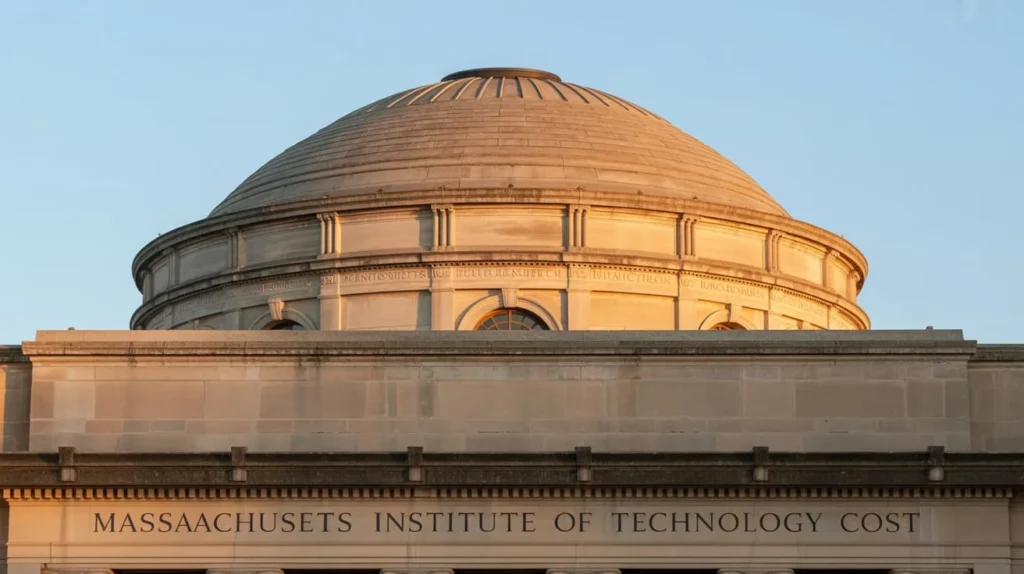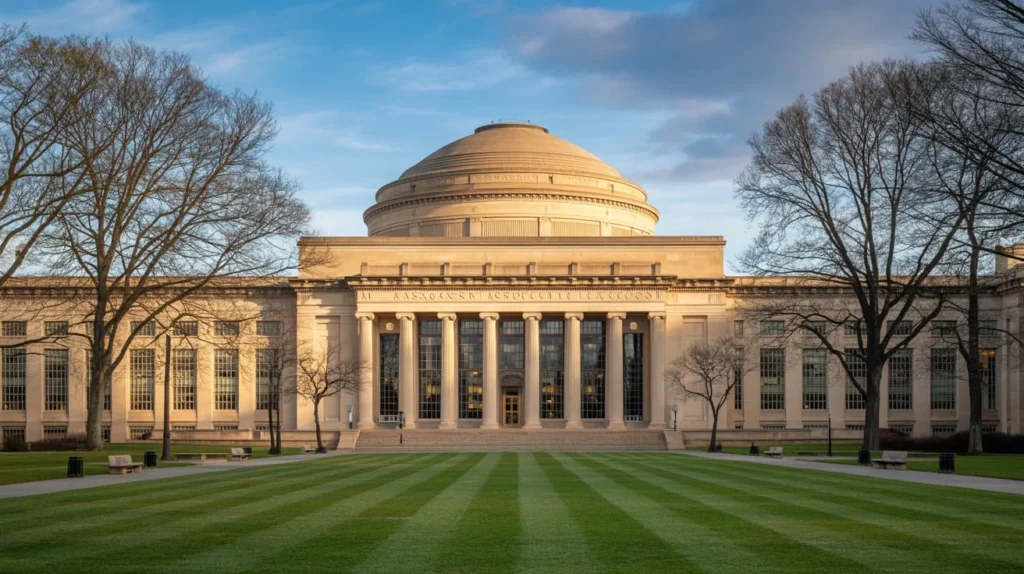The Massachusetts Institute of Technology is an essential factor for students planning to study at one of the world’s most prestigious universities. Understanding tuition fees, housing costs, and living expenses helps applicants prepare financially before they begin their academic journey.
MIT is known for its excellence in science, technology, engineering, and research. While its academic value is unmatched, studying here requires careful budgeting. The total cost is influenced by tuition, campus housing, food, books, and personal expenses.
Many students find that the cost of attending the Massachusetts Institute of Technology can be manageable when they explore scholarships, grants, and financial aid programs. Planning ensures you can focus on learning rather than worrying about expenses.
Tuition Fees for Undergraduate Programs at MIT
The tuition fee for undergraduate students at MIT is one of the most significant factors in the overall cost of attending the Massachusetts Institute of Technology. For the 2024–2025 academic year, the fee is about $59,750 for all undergraduate programs, regardless of the chosen major. This payment covers academic instruction, access to campus facilities, and essential learning resources provided by the university.
Tuition rates at MIT tend to rise slightly each year to match inflation and support the institution’s operational needs. These incremental increases ensure the university can maintain its high-quality teaching, research opportunities, and modern facilities. Students planning to attend should factor in potential yearly changes when budgeting for their degree.
MIT also offers a strong commitment to financial accessibility through its generous aid programs. The institute provides need-based financial aid packages, grants, and scholarships so that students from all economic backgrounds can afford to study. This ensures that talent, not financial status, determines admission to MIT.
Graduate Program Tuition and Costs
Graduate tuition fees at MIT depend on the specific program and department. On average, most graduate students pay about $60,000 per year in tuition. However, specialized programs such as the Sloan School of Management MBA can exceed $80,000 annually. These fees cover advanced instruction, academic support, and access to cutting-edge research facilities.
Additional Expenses for Graduate Students
- Research fees – Charged for specialized research activities and lab work.
- Health insurance – Mandatory unless students provide proof of equivalent coverage.
- Activity fees – Support student organizations, events, and campus activities.
- Lab or technology fees – Applied to programs with high equipment or software needs.
- Living expenses – Include housing, food, and personal costs, which vary by lifestyle.
Many graduate students offset these costs by securing stipends, fellowships, or assistantships. These opportunities not only reduce tuition but also provide valuable professional experience during their studies.
Additional Student fees

While tuition makes up the largest share of the Massachusetts Institute of Technology cost, students also need to budget for mandatory fees. These charges cover a variety of services, facilities, and activities that enhance the overall campus experience and support student life.
Student Life Fee
The student life fee helps fund events, clubs, and student organizations across campus. It ensures students have access to extracurricular activities, leadership opportunities, and social events throughout the academic year.
Health Insurance
MIT requires all students to have health insurance coverage. Those without an equivalent private plan must enrol in the MIT Student Health Insurance Plan, which provides access to on-campus health services and partner medical facilities.
Laboratory Fees
Laboratory fees apply to courses that involve practical lab work or specialized research. These charges cover equipment maintenance, safety materials, and the purchase of necessary lab supplies.
Student Activity Fee
The student activity fee supports sports programs, cultural events, and recreational activities. It allows students to participate in athletics, arts programs, and community-building events on campus.
Housing Costs for MIT Students
Housing makes up a significant portion of the Massachusetts Institute of Technology’s cost. For undergraduates living on campus, housing expenses typically range from $11,000 to $15,000 per academic year, depending on the dormitory and room type. Graduate housing prices can be higher, especially for single apartments or family accommodations.
Students who choose off-campus living should expect to pay between $1,200 and $2,500 per month, depending on location and amenities. On-campus housing often proves more affordable as it includes utilities and offers easy access to campus facilities, while off-campus options provide greater independence and flexibility.
Cost of Meal Plans and Food
MIT offers different meal plans for students living on campus. These plans range from $5,000 to $6,500 per year, depending on the number of meals and dining hall access. Students who cook at home can often save money, but they need to budget for groceries and kitchen supplies.
Meal plans are designed to offer flexibility, allowing students to choose options based on their schedules and dietary preferences. Off-campus students usually spend $300–$500 per month on groceries and occasional dining out.
Books, Supplies, and Technology Costs
Books and academic supplies are necessary expenses for all MIT students. On average, students spend $1,000 to $1,500 per year on textbooks, lab equipment, and stationery. Technology costs, such as laptops or software, can add another $1,000 or more, depending on the student’s field of study.
Many students save money by purchasing used books, renting textbooks, or using MIT’s library resources. The institution also offers tech discounts for students purchasing through approved vendors.
Personal and Miscellaneous Expenses
Personal expenses are another essential part of the Massachusetts Institute of Technology cost, and they vary greatly based on individual lifestyle choices. On average, students spend between $2,000 and $3,000 annually on clothing, transportation, entertainment, and personal care. Planning for these costs ensures a smoother financial experience throughout the academic year.
Common Personal Expenses for MIT Students
- Public transportation – $90 to $150 per month for transit passes.
- Entertainment – Costs for movies, concerts, and social events.
- Personal care – Expenses for haircuts, toiletries, and wellness activities.
Financial Aid and Scholarships
MIT is recognized for having one of the most generous financial aid programs among leading universities. The institute meets 100% of demonstrated financial need for every admitted student, ensuring that financial limitations do not block access to education. Aid packages are tailored individually and may include grants, scholarships, and on-campus work opportunities rather than relying heavily on student loans.
Scholarship and aid options at MIT are diverse. Students can receive need-based MIT Scholarships, federal grants for eligible U.S. citizens, and work-study opportunities to help cover living expenses. In addition, many students apply for external scholarships from private organisations and foundations to further reduce their costs at the Massachusetts Institute of Technology.
Tips for Reducing MIT Education Costs
Although studying at MIT can be costly, thoughtful financial planning can significantly lower expenses. Students can utilise budgeting tools, explore on-campus job opportunities, and select housing options that align with their financial situation. Taking proactive steps early can ease the financial load and make the cost of attending the Massachusetts Institute of Technology more manageable.
Applying for scholarships well before deadlines increases the chance of receiving aid. Sharing off-campus housing helps reduce rent and utility bills, while using free campus resources like printing, software, and libraries can cut study costs. Preparing meals at home instead of dining out frequently is another effective way to save throughout the academic year.
Conclusion
The Massachusetts Institute of Technology cost includes tuition, housing, food, books, personal expenses, and other fees. While the total amount may seem high, MIT’s extensive financial aid program ensures that cost does not become a barrier for talented and deserving students.
By understanding each component of the cost, students and families can plan more effectively. Careful budgeting, seeking scholarships, and making informed choices about housing and daily expenses can help reduce the overall financial burden.
Ultimately, studying at MIT is an investment in a world-class education, global networking opportunities, and exceptional career prospects. For those committed to innovation and academic excellence, the value far outweighs the cost.

